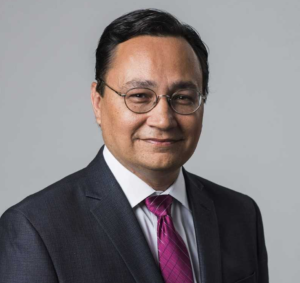
- Details
- By Chuck Hoskin Jr
At Cherokee Nation, we recently renewed a commitment to a great cause and a great tradition: public education in Oklahoma. Our tribe distributed more than $6 million to 108 school districts, the largest amount to schools in our 14-county jurisdiction since we began contributing 38 percent of annual car tag revenues to education in 2002.
Public education is the great equalizer. It is the glue that binds us together. It is the bedrock of our communities, and it is the greatest hope for a new generation.
With our latest investment, the Cherokee Nation recommitted to the health and wellness of public school students, teachers, administrators and support staff. We showed once again how Cherokee Nation puts our money where our mouth is.
During much of the last decade, state spending retreated from investing in public education. As the state government inflicted cuts to schools and spending per pupil remained stuck at the lowest level in the region, Cherokee Nation has provided essential relief. Our contribution to public education has now eclipsed $62 million over the past 18 years.
 Cherokee Nation Principal Chief Chuck Hoskin, Jr.
Cherokee Nation Principal Chief Chuck Hoskin, Jr.
School districts receive money based on the number of Cherokee Nation citizens they have enrolled. However, the funding benefits all students at the school. Our partner school districts are able to use the funding as they see fit to meet student needs. Schools have used the funds in many ways, including to buy athletic uniforms, repair damaged parking lots and leaky roofs, preserve arts programs, upgrade computer technology, expand STEM offerings, and save teacher jobs.
These contributions are on top of the exclusivity fees from the statewide gaming compact, which has funneled about $1.3 billion to Oklahoma public education in the last 15 years. Each year millions of dollars are provided to the state of Oklahoma for education funding through the tribal-state gaming compacts.
Cherokee Nation leadership, including myself, Deputy Chief Bryan Warner and all members of the Council of the Cherokee Nation, believes our investment in public education must keep growing. And we believe the state of Oklahoma should follow our lead.
The Cherokee Nation has long been a strong partner of schools in northeast Oklahoma, because we know, especially in this endeavor, that we are all in it together.
The long-term friendships forged between the Cherokee Nation and area public schools provide an indispensable pathway to opportunity for tens of thousands of young people living in our communities. We invest in schools so that when we pass on the Cherokee Nation to our kids, they will be ready to carry on our work with the foundation of a great education.
Chuck Hoskin, Jr. is principal chief of the Cherokee Nation.
More Stories Like This
Hanging a Red Dress for Christmas: MMIP, Native Higher Education, and Hope for a Better New YearNative Students Can Win $5,000 Scholarship, International Distribution in Pendleton Design Contest
American Indian College Fund Raises Alarm Over Plan to Shift Native Programs Away From the Dept. of Education
MacKenzie Scott Foundation Gives $5 Million Contribution to Little Priest Tribal College
Tribal Leaders Push Back on Dismantling of U.S. Department of Education
Help us defend tribal sovereignty.
At Native News Online, our mission is rooted in telling the stories that strengthen sovereignty and uplift Indigenous voices — not just at year’s end, but every single day.
Because of your generosity last year, we were able to keep our reporters on the ground in tribal communities, at national gatherings and in the halls of Congress — covering the issues that matter most to Indian Country: sovereignty, culture, education, health and economic opportunity.
That support sustained us through a tough year in 2025. Now, as we look to the year ahead, we need your help right now to ensure warrior journalism remains strong — reporting that defends tribal sovereignty, amplifies Native truth, and holds power accountable.
 The stakes couldn't be higher. Your support keeps Native voices heard, Native stories told and Native sovereignty defended.
The stakes couldn't be higher. Your support keeps Native voices heard, Native stories told and Native sovereignty defended.
Stand with Warrior Journalism today.
Levi Rickert (Potawatomi), Editor & Publisher
